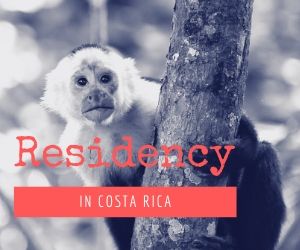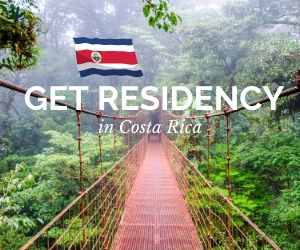|
This is the type of backlash you can expect if there is more attention to our hobby guys:
I believe this came from the Tico Times (sorry I am not 100% sure of the source)
Friday, February 02, 2007
Tourism Leaders Angry at Guidebook Criticism
By Rachel Cavanaugh
Tourism industry leaders are angry over what they say are negative comments about key destinations in Guanacaste and Puntarenas which appear in one of the world’s leading travel guidebooks.
In the October, 2006 edition of Lonely Planet’s Costa Rica guide, the author cites Playa Flamingo’s reputation for rampant cocaine use, high-end prostitution and “more dirty old men than you can shake a cigar at,†suggesting travelers find better places to spend their money.
An excerpt about Playa Tamarindo describes a beach full of “blubbery North American holidaymakers,†and says drug dealers “openly ply their wares (and women) on the main road by the rotunda…â€
The author, Matthew Firestone, saves some of his harshest criticisms for Playa Jacó, saying “Dick and Jane could buy a little reefer on the street and relive their misspent youth.â€
The potential impact of the statements is worrying, say industry leaders.
“This kind of publicity can have a very radical effect on tourism,†said Mauricio Céspedes, Executive Director of the Guanacaste Chamber of Tourism.
“In 2007, we are expecting 400,000 travelers into the Liberia airport,†he said. “The major market for these kinds of travel books is Canada and the US. They take this information very seriously.â€
MEETING
The issue was brought to light at a community meeting in Playa Flamingo when a resident, angry about recent New Year’s Eve parties in the town, stood up and waved a petition in his hand, saying out-of-control celebrations were contributing to the bad reviews.
The resident called for business owners to stop promoting year-end block parties that have come to be a tradition in the coastal town.
Lonely Planet guidebooks have been around for about 35 years. There are now 600 titles in print, sold in 118 countries in 17 languages.
Greg Benchwick, Commissioning Editor for Lonely Planet’s Mexico and Central America editions, says months of research go into every book and facts are confirmed and cross-checked multiple times. He says the freedom for authors to inject opinion into their work is a philosophy critical to travel writing. He adds that sound journalism is used to back this up.
“We hire the best writers in the world,†says Mr Benchwick. “Every book we do we collect traveler feedback. We have an entire department collecting and collating that.â€
For the October edition, he says the writer (who is currently in Panama) spent five months in Costa Rica doing research. Since they do not allow entries based only on phone calls or Internet research, the author visited every location personally.
“The Jacó (piece) did come across several people’s radar,†says Mr Benchwick. “The reason I left it in was because I felt it was an accurate portrayal of the city. I’ve seen how the town has changed.â€
Yet local officials remain concerned the negative publicity might create a domino-like effect.
“One of the worst things is that this kind of information could turn up on an embassy website,†says Mr Céspedes. “This can cause us a lot of damage. I am sending a copy of the book to the ICT (Instituto Costarricense de Turismo) to the Minister of Tourism asking him what strategies we can adopt to counter this.â€
Mr Céspedes said he had also been instructed by his board to write a letter of complaint to the Lonely Planet publishers.
CHANGING INDUSTRY
According to people in the travel industry, the online community has put a new spin on travel research. Many now turn to comment boards and discussion forums to investigate possible destinations. In this setting, one bad review can spread like wildfire.
© Rachel Cavanaugh
[[+] Zoom]
GUIDEBOOK UPSET: The Flamingo Development Association votes in mid-term elections last Saturday. Anger over negative publicity in a recent Costa Rica guidebook surfaced at the meeting, sending a wave of upset along the Pacific Coast. The Guanacaste Chamber of Tourism is to send a letter to Lonely Planet, complaining about negative comments in their October publication. And another letter to the Minister of Tourism, seeking a solution to the bad publicity.
“The most influential source of information is the Internet,†says Fodor’s Costa Rica contributor Dorothy MacKinnon. “That is the power.â€
Like the Lonely planet, Fodor’s 2007 Costa Rica guidebook also gives certain Pacific destinations bad reviews. In Playa Jacó, for example, it refers to “blatant prostitution†and a “cluttered appearance devoid of any greenery.†It talks about over-development in Playa Flamingo and Playa Tamarindo.
Some locals say they are worried a trend may develop.
“When you do something good a couple people remember,†says Jorge Calvo, President of the Asociación Pro Mejoras de Playa Tamarindo. “When you do something bad, a hundred people do.â€
Yet the Fodor’s book mentions positive aspects as well, commenting on good restaurants and hotels in the region. In Playa Tamarindo specifically, it says: “once you’re on the beach almost all negatives disappear.â€
“There will always be positive and negative comments on an area,†says Dr Calvo. What’s important in Tamarindo is there’s a concerned residential population that’s organized.â€
Fodor’s Costa Rica contributor Jeffrey Van Fleet points out also that the travel writer has responsibility to the reader.
He says that although the publication rarely gives bad reviews to individual establishments—they merely leave them out---they have an obligation to let people know if whole regions change dramatically.
“The work is subjective,†he says. “It can’t not be.
“I don’t take that subjectivity lightly. I know a good or bad recommendation can make a lot of difference to a business.
“But if a beach or town or region has demonstrated problems, such as becoming overdeveloped, overpriced, crime-ridden, dirty…I say so and mince no words.â€
Tourism officials say the concern with the Lonely Planet publication is it leaves little room for positive interpretation.
“If someone takes this book and reads about the beaches of Costa Rica, why would they come here?†says Mr Céspedes. “There are some very positive things in this area, but none of those seem to have been mentioned.â€
POSITIVE OUTLOOK
Despite criticism, Costa Rica remains a hot spot on the tourist map. On Wednesday international magazine Travel Weekly named Costa Rica the US industry’s number one tourists destination in Latin America.
Furthermore, the Lonely Planet book spoke favorably of both Playa Brasilito and Playas del Coco, leaving residents of neighboring towns optimistic.
“It still has one of the nicest beaches in Costa Rica, white sand beaches,†says Playa Flamingo resident Larry Barrow. “It’s not crowded; it has hotels in every price range. There is something for everyone.â€
Residents in Playa de Jacó say they feel the same about their town.
“Jacó is an evolving city,†says Pat Hundley, Co-Chairman of the Central Pacific Chamber of Commerce. “There’s been more growth and development in the last two years than in the previous 50.
“Jacó is not a perfect city. But it is our little city and we’re pretty proud of it.â€
|









